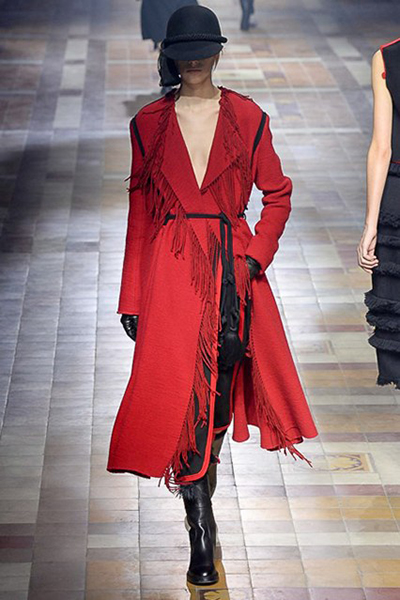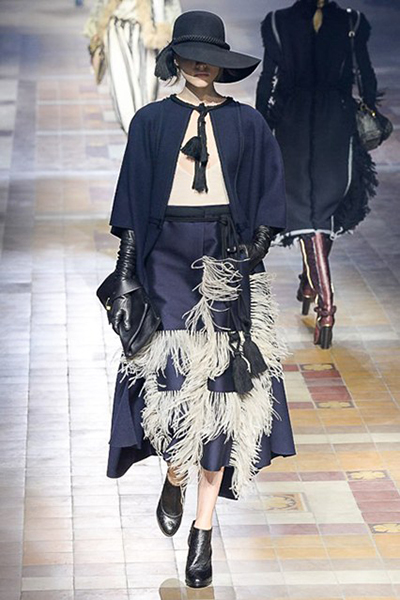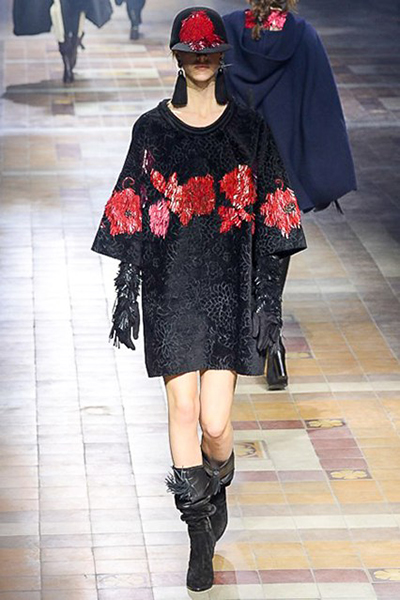|
Lanvin: Moroccan Memories Cheered to the Beaux-Arts’ rooftop after his Lanvin show, Creative Director Alber Elbaz explained the secret behind the rich textures, fringed cords, and Berber stripes. He had gone back to the place where he was born. “I’ve never done Morocco before and since 2014 was the 125 anniversary of Lanvin, I thought I would also celebrate my birthday – but I had to take inspiration from Morocco and not make it look like as if I had,” said Elbaz.  Picture credit: Indigital  Picture credit: Indigital He was referring to the Lanvin exhibition, which opens this week in Paris at the Palais Galliera, in which Alber’s work of the past 14 years will not appear. All the more reason, then, for the designer to make his homage in a powerful but unexpected way. What Alber and founder Jeanne Lanvin have in common is a respect for women. While his recent collections had seemed effective enough, this one stood out for its visit to a new tribe – without being engulfed by ethnic influences. Or, as Alber put it, “What do I do so that it doesn’t look like the desert?”  Picture credit: Indigital  Picture credit: Indigital The answer was to take elements – especially silk cord – and work them into modern city clothes. Alber described his challenge as “to take the kaftan and put it on the body”. It became tailoring with a hand-worked edging. The first strikingly North African influence was on a red coat whose lapel and front were treated to a blanket edge of fringe. Some effects were super subtle, such as cords twisted round the waist of a coat; others were more obvious, including a leather harness as worn by desert riders. A top that looked like a peasant blouse could be traced to the Maghreb by way of Yves Saint Laurent (where Alber briefly worked).  Picture credit: Indigital  Picture credit: Indigital I was captivated by the skills the designer showed throughout, introducing triple-line stripes so that they might have been either a riff on formal pin stripes or that Berber blanket effect. In the programme notes that arrived a few hours after the cheers and applause had faded, Elbaz listed his contrary European/North African influences. “Opulent and strict; dry and warm; opaque and transparent; masculine and feminine,” the description read. To these he added colours that might have been taken from the Beaux-Arts’ tiled floor: pomegranate red, earth brown, burgundy and sun-baked earth.  Picture credit: Indigital But mere words are not enough to do justice to this fusion of an artistic mind with the ghost of a memory of his past. It was an unforgettable fashion moment. (责任编辑:admin) |
